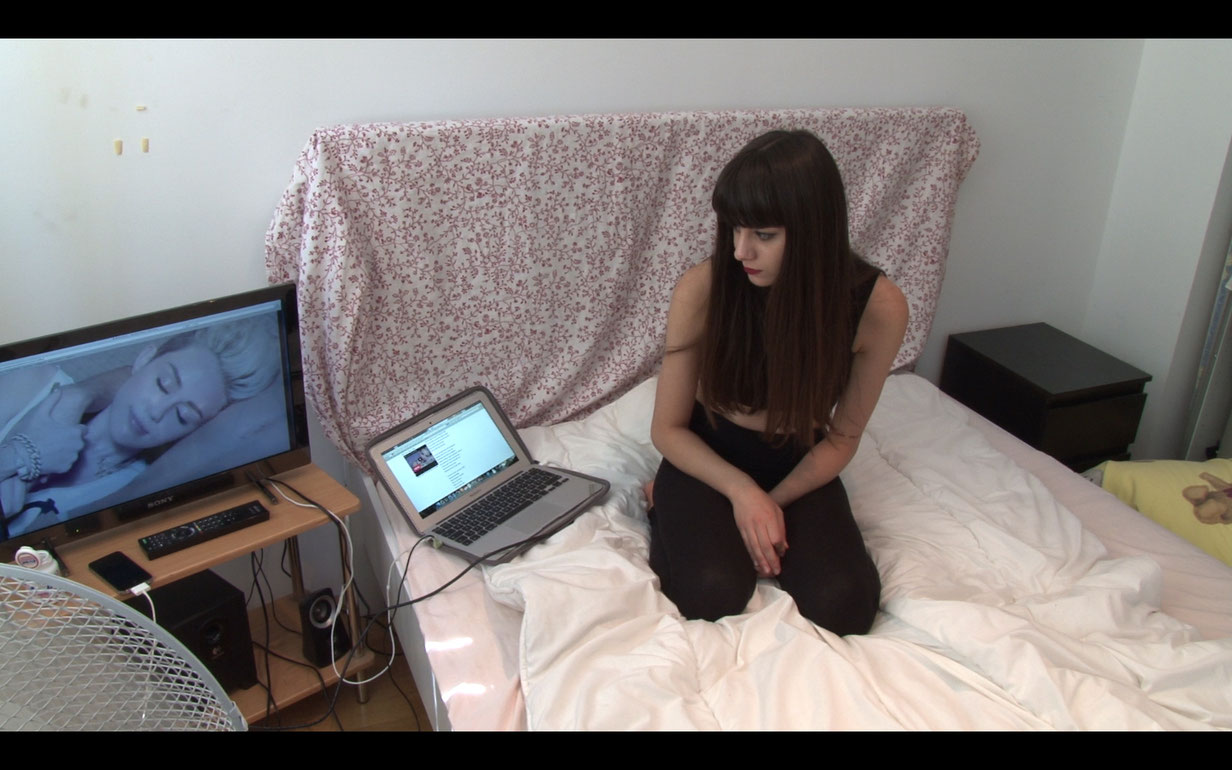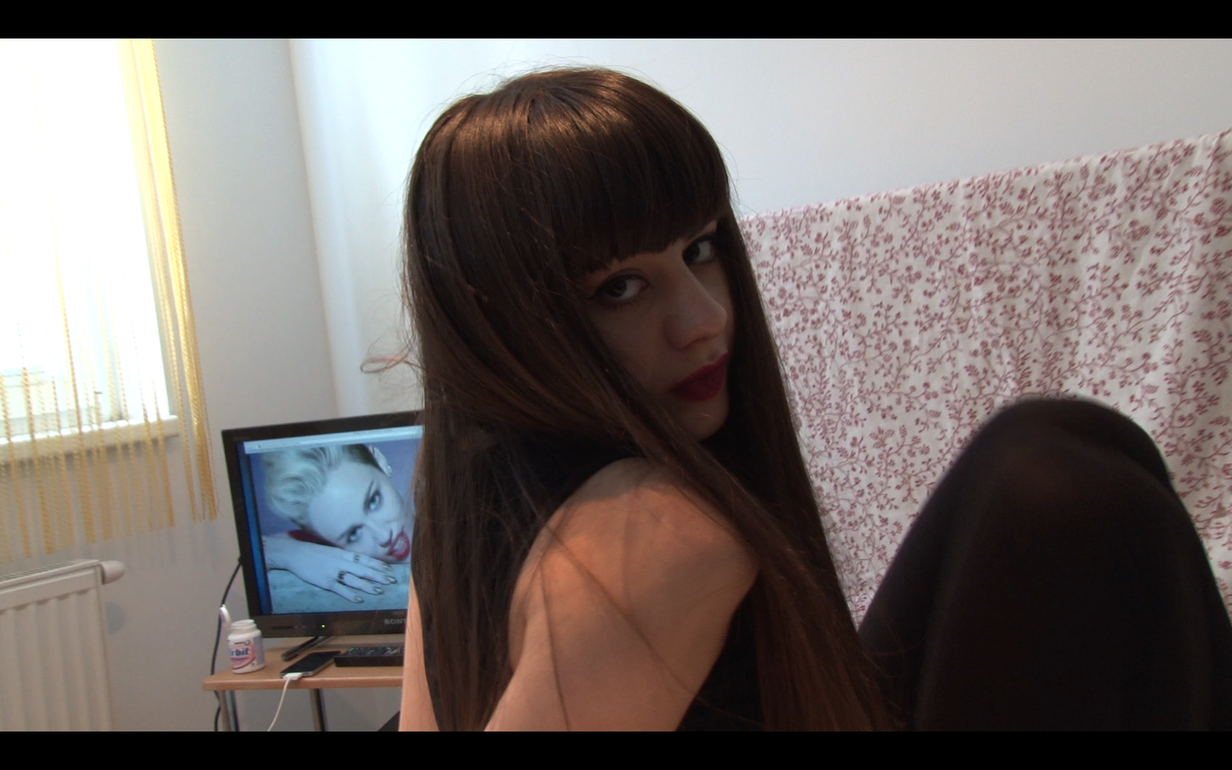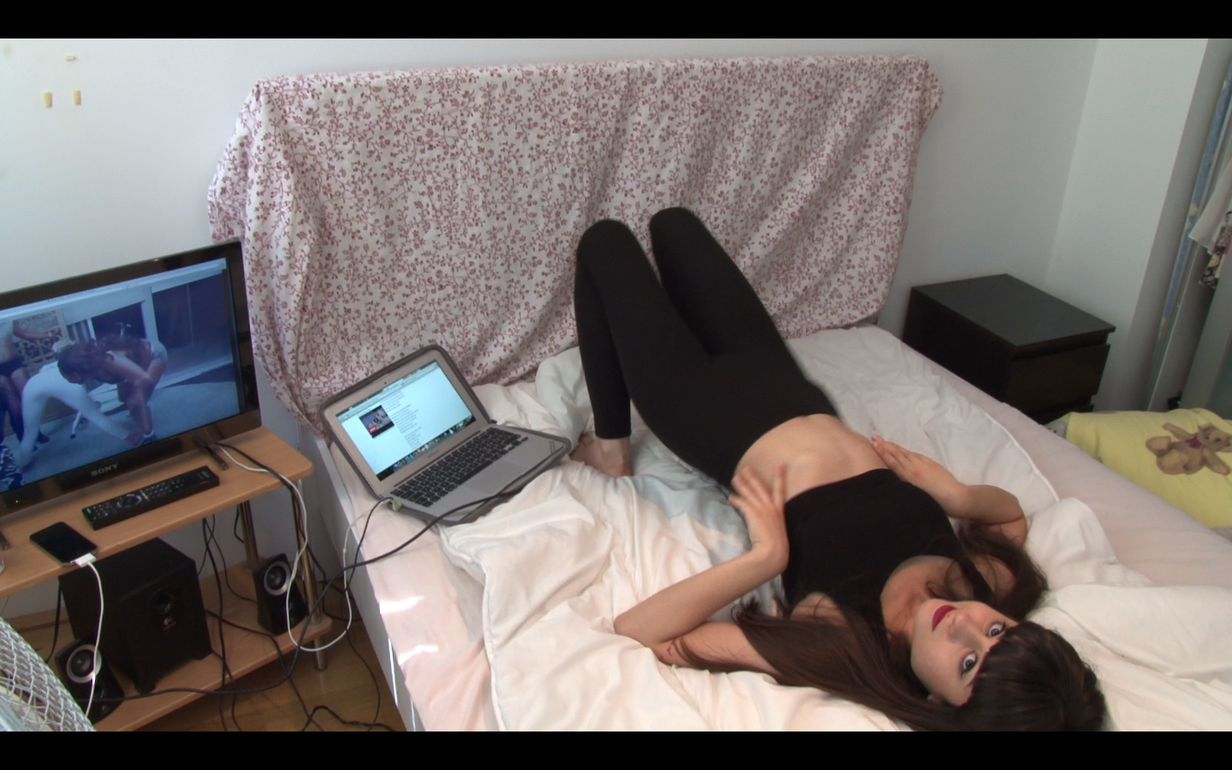sexy
The background story for sexy is worked out on a huge flat-screen television. Mega pop star Miley Cyrus’s music video “We Can’t Stop” is playing, which the artist Kurdwin Ayub watches, copies, and ultimately also interprets. Like the singer, she, too, lolls about in a skin-tight fitness suit that stops above her belly, imitates the movements of copulation on the sheet, and shakes her butt from time to time. The amateur and the professional on the screen embody the youthful vamp.
In sexy, both women are occupied with the casual self-empowerment of their bodies. But Kurdwin Ayub’s protagonist does not have the tools to become an international star: there is no black rapper, no ultrathin models who want to be cool tomboys to multiply her attraction. She scratches her head and chewing on her gum, broods over her choreography, which she could commandingly convert to sexy “capital.” She doesn’t wrestle with oversize plush teddy bears, like Cyrus, or with the cool clique of friends on the next screen. Insecure, she struggles in a minimalist way with the (commercialized) cliché of an erotic role model. There, where Miley Cyrus sells her appeal as a natural feeling of being alive Kurdwin Ayub’s alter ego is tormented by doubt about the fervor of exhibiting one’s self.
With her work sexy, the artist uses a simple, pleasurable, and funny approach to burst our notion of an unbroken transfer of female authenticity by the media. At first glance, it is hard to tell if sexy is an ad hoc You-tube clip, a poor-seeming parody, or even feminist video documentation of a succinct spontaneous performance? No idea. Certain is, Kurdwin Ayub’s pseudo-intimate settings shake a viewer’s stereotyped thinking. Here, with a rare lightness, her artistic playing field becomes a confusing deconstruction of strategically employed aesthetics. (Petra Erdmann)
Translation: Lisa Rosenblatt
sexy
2013
Austria
3 min



